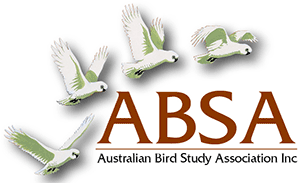USE OF THE JOLLY-SEBER MODEL TO DETECT VARIATION IN SURVIVAL, POPULATION SIZE AND RECRUITMENT OF BRIDLED HONEYEATERS AT PALUMA, QUEENSLAND
| Posted: |
08/08/2021 |
| Author(s): |
E. Belinda Dettmann |
Attention is drawn to deficiencies in some methods of estimating survival, including 'known to be
alive· or ·calendar of captures· methods. The Jolly-Seber model is recommended for estimation of
survival, population size and recruitment from capture-recapture data.
The Jolly-Seber model is described and used to analyse banding data collected from 184 Bridled
Honeyeaters at Paluma, Queensland between 1982 and 1987. The average population size was 191
(±90) but population varied markedly with season. A large influx of birds was detected in the April/June
quarter in 1984 and 1986 when populations were estimated at 750 and 322 birds respectively. The
local population in non-influx seasons averaged 80 birds. Annual survival (interpreted as proportion of
birds remaining in the population) averaged 0.751 (±0.256) overall with an expectation of further life
of 3 years 6 months but survival also varied seasonally. In 1982-84 when most data were available
annual survival averaged 0.672 during the period July-March (expectation of further life of 2 years
4 months) but dropped to 0.077 during the April-June influx period (expectation of further life of
4 months). Recruitment to the local population averaged 12 birds per quarter throughout the year but
received a boost of several hundred birds during the April-June quarter in some years.
>> Download Abstract |
File Size: 84KB
>> Download Complete PDF | File Size: 1MB
